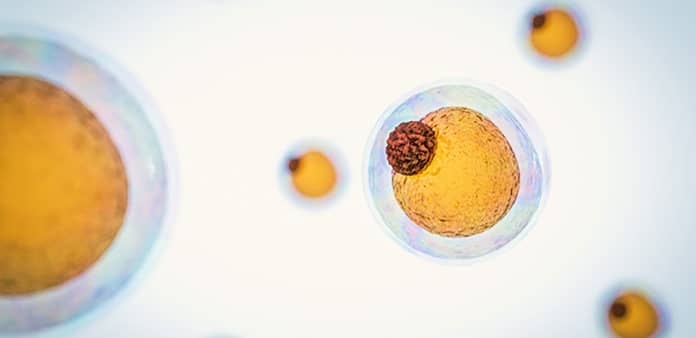A new study uncovers how immune cells respond to infection by acquiring high-energy fatty acids from body fat. The study could help develop new approaches to treating people with bacterial infections.
In collaboration with the Quadram Institute and colleagues at the Earlham Institute, scientists from the University of East Anglia and Quadram Institute tracked fatty acid movement and consumption in live stem cells.
The team studied the immune response to Salmonella bacterial infection by analyzing liver damage. The Salmonella bacterial infection causes diarrhea, vomiting, abdominal pain, fever, and sepsis.
Scientists found that in the bone marrow where blood stem cells are resident, infection signals drive adipocytes to release their fat stores as fatty acids into the blood. They found that these high-energy fatty acids are then taken up by blood stem cells. This efficiently feeds the stem cells and activates them to create thousands of Salmonella-fighting white blood cells.
Scientists also identified the mechanism through which the fatty acids are transferred.
Dr. Stuart Rushworth, from UEA’s Norwich Medical School, said: “Our results provide insight into how the blood and the immune system can respond to infection.”
“Fighting infection takes a lot of energy, and fat stores are huge energy deposits, which provide the fuel for the blood stem cells to power up the immune response.”
“Working out the mechanism through which this ‘fuel boost’ works gives us new ideas on how to strengthen the body’s fight against infection in the future.”
Dr. Naiara Beraza from the Quadram Institute said: “Our results allow us to understand how our immune system uses fat to fuel the response to infection. Defining these mechanisms will enable us to develop new therapeutics to treat infections in the liver.”
Dr. Rushworth said: “In the future, I hope our findings will help improve treatment for vulnerable and older people with infections by strengthening their immune response.”
“With antibiotic resistance being such a present and widespread challenge for society, there is an urgent need to explore novel ways like this to help the body’s immune system to fight infection.”
Journal Reference:
- Mistry, J.J., Hellmich, C., Moore, J.A. et al. Free fatty-acid transport via CD36 drives β-oxidation-mediated hematopoietic stem cell response to infection. Nat Commun 12, 7130 (2021). DOI: 10.1038/s41467-021-27460-9
